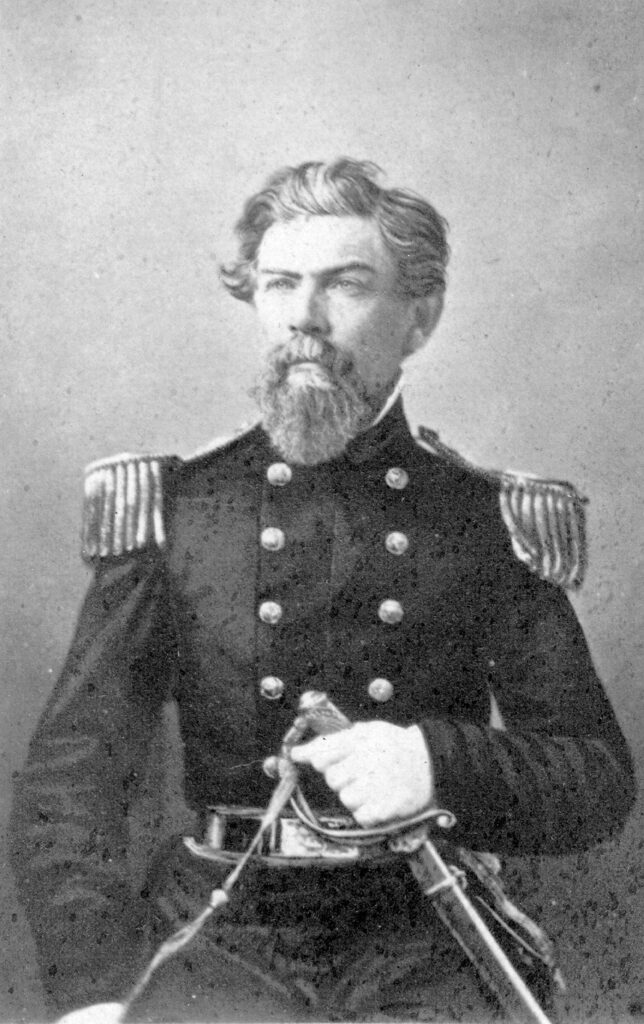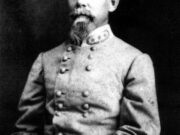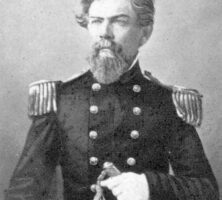William J. Hardee’s 1855 textbook, Rifle and Light Infantry Tactics, was required reading for officers in both the Union and Confederate armies during the Civil War (1861-65). Achieving the rank of lieutenant general in the Confederate army, Hardee was renowned for his understanding of tactical maneuvers in battle.
The youngest of seven, William Joseph Hardee was born at Rural Felicity in Camden County on October 12, 1815, to Sarah Ellis and Major John Hardee. He entered the U.S. Military Academy at West Point, New York, in 1834, graduated in 1838, and accepted a commission in the army. During the Second Seminole War (1835-42), Hardee was stricken with illness and, during his hospitalization, met and married Elizabeth Dummett. Upon recovery from the illness, he was sent to France for a year to study military tactics.

Courtesy of Georgia Historical Society.
Hardee then participated in the invasion of Mexico during the Mexican War (1846-48), during which he was captured and returned via prisoner exchange. He subsequently rode under General Zachary Taylor and, because of his valor on the battlefield, received two field promotions. After the war he led units of Texas Rangers and soldiers in Texas. Recalled to Washington, D.C., he wrote Rifle and Light Infantry Tactics, which would become the most widely read military manual during the Civil War. Following his wife’s death in 1853, Lieutenant Colonel Hardee served as the commandant of cadets at West Point.
When Georgia seceded from the Union in 1861, Hardee resigned his commission and accepted the rank of colonel in the new Confederate army. Aware of the considerable supply and training problems his troops faced, Hardee surrounded himself with the best staff and commanders he could find. He trained his soldiers thoroughly, and their success in battles earned him the nickname “Old Reliable.”
Hardee was quickly promoted to brigadier general, then major general, and was given a corps command in Kentucky. After a severe defeat at the hands of Union general Ulysses S. Grant’s troops, his corps joined General Braxton Bragg’s Army of Tennessee, and Hardee, now a lieutenant general, saw his greatest strategic success in Tennessee at the Battle of Murfreesboro, December 1862. The battle ended in a stalemate, however, with some 23,000 killed on both sides.

Courtesy of National Archives and Records Administration
Through the course of 1863 Hardee wooed Mary Foreman Lewis, an Alabama plantation owner, and in January 1864 they were married. During the same period Hardee learned that he did not like Bragg or his strategies, and he and others challenged Bragg’s leadership. After another harsh defeat near Chattanooga, Tennessee, Bragg resigned, and Hardee briefly assumed command of the army in December 1863. For reasons unknown, Hardee declined permanent command, and General Joseph E. Johnston replaced him.
In the Atlanta campaign, Hardee commanded a corps in the army, first under Johnston and then under General John Bell Hood, who replaced Johnston in July 1864. After repeated Confederate defeats outside Atlanta that summer—for which Hood blamed Hardee—Hardee secured a transfer to another department. He later commanded the Confederate forces that unsuccessfully defended Savannah against Union general William T. Sherman in December 1864, after his march to the sea. By the end of the war, Hardee had reunited with the Army of Tennessee in North Carolina and surrendered with that army in April 1865.
After the war Hardee and his wife and family settled on her plantation. After getting the plantation back to working condition, the family moved to Selma, Alabama, where Hardee worked in the warehouse and insurance businesses. He eventually became president of the Selma and Meridian Railroad. He fell ill at the family’s summer retreat at White Sulfur Springs, West Virginia, and he died in Wytheville, Virginia, in 1873.








